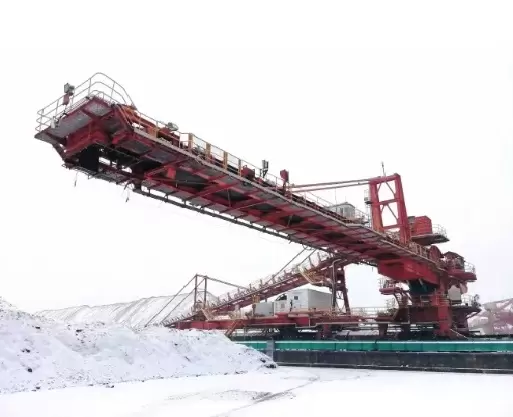The Versatility and Efficiency of Cantilever Stackers
Cantilever stackers are versatile and efficient material handling equipment that are widely used in various industries. They are designed to lift and transport heavy loads in a safe and efficient manner. In this article, we will explore the different types of cantilever stackers, their features and benefits, applications, as well as maintenance and safety considerations.
Understanding Cantilever Stackers
Cantilever stackers are a type of forklift that feature a cantilevered mast, which allows for easy maneuverability and efficient lifting of loads. They are typically powered by electric motors or internal combustion engines, depending on the specific model. Cantilever stackersare designed to handle a wide range of loads, from pallets to heavy machinery.

Types of Cantilever Stackers
There are several types of cantilever stackers available in the market, each designed for specific applications. The most common types include:
Manual Cantilever Stackers: These stackers are operated manually, without the need for any external power source. They are ideal for light-duty applications and are often used in small warehouses or workshops.
Electric Cantilever Stackers: These stackers are powered by electric motors and are suitable for medium to heavy-duty applications. They offer smooth and quiet operation, making them ideal for indoor use.
Counterbalance Cantilever Stackers: These stackers are equipped with a counterbalance weight at the rear, which allows them to lift and transport heavy loads without the need for additional support. They are commonly used in manufacturing facilities and warehouses.
Features and Benefits of Cantilever Stackers
Cantilever stackers offer a range of features and benefits that make them a popular choice for material handling operations. Some of the key features and benefits include:
Versatility: Cantilever stackers can handle a wide range of loads, from small pallets to heavy machinery. They can be equipped with various attachments, such as forks or clamps, to accommodate different types of loads.
Maneuverability: The cantilevered mast design allows for easy maneuverability in tight spaces. Cantilever stackers can navigate narrow aisles and tight corners with ease, making them suitable for use in warehouses and other confined spaces.
Efficiency: Cantilever stackers are designed for efficient operation, with quick lifting and lowering speeds. They can significantly reduce the time and effort required to handle heavy loads, improving overall productivity.
Safety: Cantilever stackers are equipped with safety features, such as load backrests and safety guards, to prevent accidents and injuries. They also have built-in safety mechanisms, such as overload protection and emergency stop buttons, to ensure safe operation.

Applications of Cantilever Stackers
Cantilever stackers find applications in various industries and settings. Some of the common applications include:
Warehousing and Distribution: Cantilever stackers are widely used in warehouses and distribution centers for loading and unloading pallets, stacking goods, and transporting materials.
Manufacturing: Cantilever stackers are used in manufacturing facilities for moving heavy machinery and equipment, as well as for handling raw materials and finished products.
Retail: Cantilever stackers are used in retail settings, such as supermarkets and department stores, for stocking shelves and moving merchandise.
Construction: Cantilever stackers are used in construction sites for lifting and transporting construction materials, such as bricks, blocks, and steel beams.
Maintenance and Safety Considerations
Proper maintenance and adherence to safety guidelines are essential for the safe and efficient operation of cantilever stackers. Some key maintenance and safety considerations include:
Regular Inspections: Cantilever stackers should be inspected regularly for any signs of wear and tear, such as damaged forks or hydraulic leaks. Any issues should be addressed promptly to prevent accidents and equipment failure.
Operator Training: Operators should receive proper training on the safe operation of cantilever stackers. They should be familiar with the equipment's controls, safety features, and load capacity limits.
Load Capacity: Cantilever stackers have specific load capacity limits that should not be exceeded. Overloading the stacker can lead to instability and accidents. Operators should always check the load capacity before lifting any load.
Battery Maintenance: If using electric cantilever stackers, proper battery maintenance is crucial. Batteries should be charged and maintained according to the manufacturer's guidelines to ensure optimal performance and longevity.

Conclusion
Cantilever stackers are versatile and efficient material handling equipment that offer a range of features and benefits. They are widely used in various industries for lifting and transporting heavy loads. By understanding the different types of cantilever stackers, their features and benefits, applications, as well as maintenance and safety considerations, businesses can make informed decisions when it comes to selecting and operating these valuable tools.
- Art
- Causes
- Crafts
- Dance
- Drinks
- Film
- Fitness
- Food
- Games
- Gardening
- Health
- Home
- Literature
- Music
- Networking
- Other
- Party
- Religion
- Shopping
- Sports
- Theater
- Wellness


